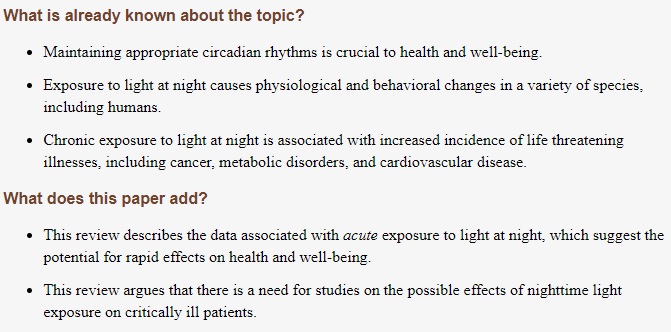Nelson RJ, DeVries AC. Medical hypothesis: Light at night is a factor worth considering in critical care units. Adv Integr Med. 2017;4(3):115-120. doi:10.1016/j.aimed.2017.12.001
Abstract
Exposure to light at night is not an innocuous consequence of modernization. There are compelling data linking long-term exposure to occupational and environmental light at night with serious health conditions, including heart disease, obesity, diabetes, and cancer. However, far less is known about the physiological and behavioral effects of acute exposure to light at night. Among healthy volunteers, acute night-time light exposure increases systolic blood pressure and inflammatory markers in the blood, and impairs glucose regulation. Whether critically ill patients in a hospital setting experience the same physiological shifts in response to evening light exposure is not known. This paper reviews the available data on light at night effects on health and wellbeing, and argues that the data are sufficiently compelling to warrant studies of how lighting in intensive care units may be influencing patient recovery.
Extract

